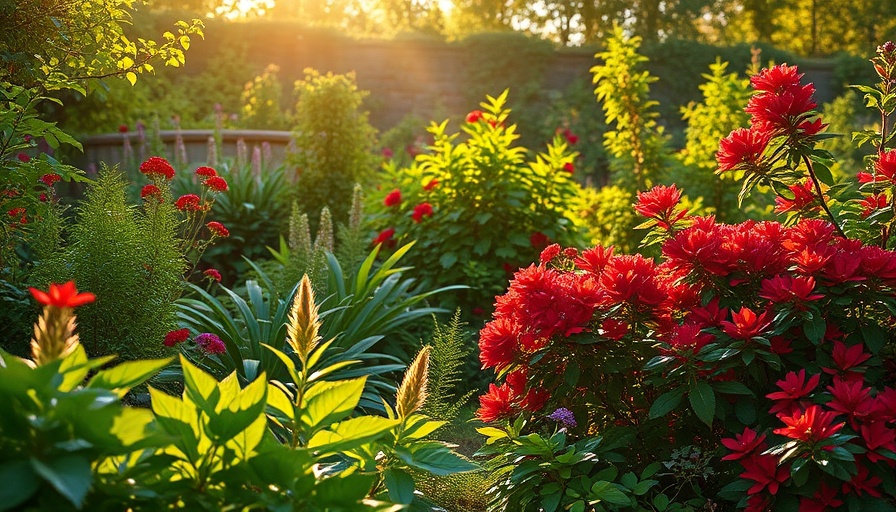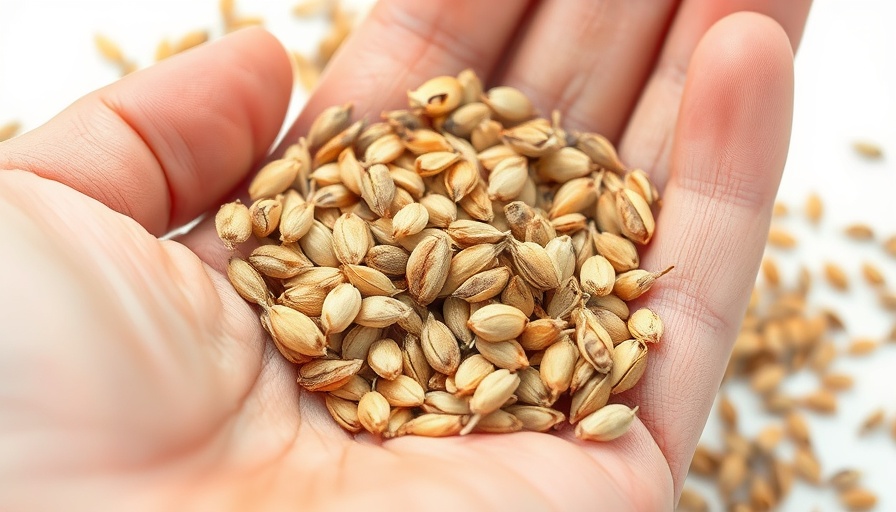
Transform Your Yard This Fall with Water-Smart Solutions
As the days grow shorter and the nights are cooler, the fall season presents a perfect opportunity for homeowners to reassess their landscaping strategies. For many parts of the U.S., transitioning to a water-smart garden is no longer just a novelty; it's a necessity. With an increasing number of regions implementing strict water usage regulations, understanding how to make your landscaping more efficient can have lasting benefits for both the environment and your gardening success. By taking a proactive stance this fall, you can set your yard up for success come springtime.
Understanding Your Environment: The Key to Water-Smart Landscaping
Identifying how much rainfall your locality receives, along with the unique challenges posed by your local ecosystem, is vital. For instance, what works in the lush Willamette Valley may not suit the arid landscapes of Texas. According to experts, the lay of the land significantly influences water usage—slope, soil type, and plant choices should all align with your local climate.
Recognizing these environmental factors lays the groundwork for tailored landscaping that prioritizes water conservation. It’s not merely about using less water; it’s about optimizing the water already available to nurture your plants. For those living in areas like Muskegon, understanding local weather patterns will enable you to make informed decisions about how to structure your backyard projects.
Five Game-Changing Adjustments for Your Fall Gardening
With your environmental notes in hand, let's dive into five strategic adjustments that will yield a more vibrant, sustainable garden:
- Layer on Mulch: Adding a new layer of mulch can significantly reduce water evaporation and suppress weeds, ensuring your plants receive maximum moisture.
- Incorporate Native Plants: Choose flora that is naturally adapted to your region. Native plants are more resilient to local weather conditions and usually require less maintenance.
- Optimize Your Irrigation System: Consider implementing automated watering hacks—such as drip irrigation—or homemade watering devices to ensure plants get the right amount of water without waste.
- Engage in Soil Amendments: Enhance the quality of your soil with organic amendments, promoting better water retention and providing nutrients to plants effectively.
- Design Effective Garden Layouts: Thinking about the structure of your garden can make a big difference. Lay out planting rows according to moisture availability, and consider slopes that aid drainage.
Embracing Trends in Sustainability
Water-smart landscaping isn't just beneficial—it’s trending. Homeowners are increasingly aware of water conservation, with many seeking out strategies to minimize waste while maximizing aesthetic appeal. For DIY enthusiasts in Muskegon, integrating sustainable projects such as composting barrels or building elevated planters not only contributes to a healthy ecosystem but can also facilitate sustainable gardening practices.
Future Trends in Sustainable Gardening
As we look to the future, the importance of water-smart gardening will only intensify. The climate crisis compels us to rethink our relationship with nature and adapt our practices accordingly. Innovative concepts like xeriscaping—designed for arid climates—are likely to gain traction alongside modern drip irrigation systems, promoting more responsible water use.
Your Next Steps for a Water-Smart Garden
As you make these adjustments, consider engaging with your local gardening community. Sharing resources, insights, and techniques fosters a greater collective understanding of best practices for sustainability. Don’t hesitate to explore projects that contribute to your yard's functionality while adding aesthetic value, from building arched plant supports to creating a custom patio ensemble.
Conclusion: Cultivating a Conscious Approach to Gardening
Now is the perfect time to act. With the cooler months ahead, make a commitment to transform your landscaping into a water-smart oasis. Not only is this beneficial for your plants, but it also plays a crucial role in promoting sustainable living within your community. Take the challenge of revamping your outdoor space seriously, and reap the rewards of a flourishing garden that is both beautiful and environmentally friendly.
 Add Row
Add Row 
 Add
Add 


Write A Comment